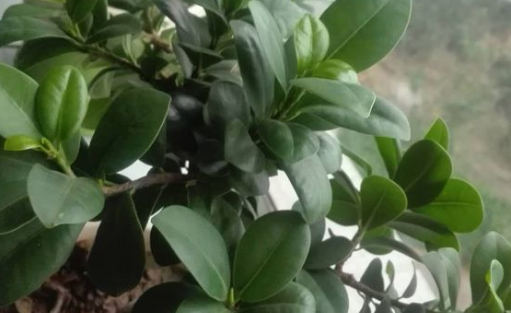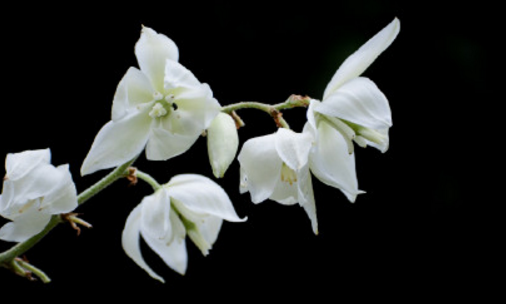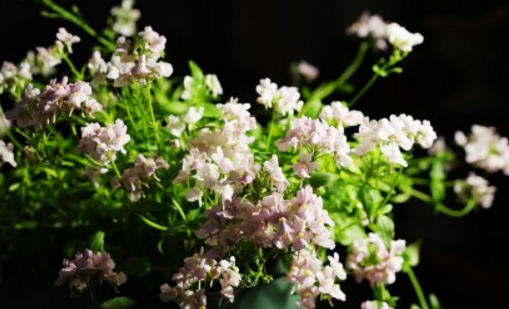What if the leaves of ginseng and banyan turn yellow? How to cultivate in hydroponics? How is it grafted?
Ginseng banyan habit likes light, if the lack of light will lead to yellow leaves, then ginseng banyan leaves yellow how to do? How to cultivate in hydroponics? How is it grafted? According to the data, ginseng banyan habits like light, if the lack of light will lead to slow plant growth and yellow leaves. Although ginseng banyan is a kind of light-loving plant, if it is placed in direct sunlight for a long time, it will also cause scorching or yellowing at the edges of the leaves.

What if the leaves of ginseng and banyan turn yellow?
1. Improper illumination of ginseng banyan.
Ginseng banyan habits like light, if the lack of light will lead to slow plant growth and yellow leaves. Although ginseng banyan is a kind of light-loving plant, if it is placed in direct sunlight for a long time, it will also cause scorching or yellowing at the edges of the leaves.
In this case, it is necessary to move the plant to the sun or semi-light outside, and then move it indoors after flowering.
2. Improper fertilization of ginseng banyan.
When the basin soil is too much nitrogen fertilizer or lack of phosphate fertilizer and potassium fertilizer, or insufficient fertilization, long-term failure to change the basin soil will lead to thin branches and yellowing leaves.
In the case of excessive application of nitrogen fertilizer, the amount of water should be increased, the fertilizer should be discharged, and the basin should be poured immediately, the soil should be washed, and the basin soil should be replaced for re-cultivation; in the case of insufficient fertilization, the basin should also be changed, and then re-cultivated in fertile and loose basin soil. pay attention to pouring water to slow down seedlings, and then apply liquid fertilizer or compound fertilizer after recovery.
3. Improper watering of ginseng and banyan
Whether too much watering leads to stagnant water in the basin soil, lack of oxygen and decay in the roots of the plant, or lack of water caused by too little watering, the leaves will turn yellow.
For this situation, it is necessary to control the amount of water, often loosen the soil, strengthen ventilation, or properly spray water on the leaves and move the plants to a cool place.
4. Diseases and insect pests of ginseng banyan
If the scale insect harms the plant, it will cause the leaves of the plant to yellowing or even fall off.
For this situation, it is necessary to remove pests in time, reduce the amount of water, spray leaves, soften water quality, pay attention to shading, reduce fertilization and so on.
Second, how to cultivate in water?
1. Conditions for hydroponic cultivation of ginseng banyan
Ginseng banyan is a light-loving plant, can also adapt to the semi-shady environment, of course, the time should not be too long. The requirement of water for hydroponic culture of ginseng banyan is not too high, and the conservation conditions of hydroponic ginseng banyan are not high, just put the plant in a position with good light, change water on time (once every 15-20 days), and add some nutrient solution appropriately. In this way, it can promote the healthy growth of the plant, increase the vitality and improve the ornamental value.
2. The specific process of water cultivation of ginseng banyan.
The first week of hydroponics
You need to change water frequently in the first week. generally speaking, it is best to change water every other day and more than three times a week. At this time, it is necessary to pay attention to dripping water quality stabilizer when changing water to ensure the water quality and maintain the stable growth of the plant.
The second week of hydroponics
The frequency of changing water this week is changed to three times a week.
The third week of hydroponics
After this week, the water has to be changed once a week. If there are green algae in the water, the frequency of water change can be reduced appropriately, so as to avoid oxygen competition with ginseng banyan and lead to hypoxia and withering or death of the plant.
3. Matters needing attention of ginseng banyan in water culture.
The water needed for hydroponic culture of ginseng banyan had better be pure water or water exposed to the sun for an hour, which can be changed into tap water after a month of cultivation. In addition, for the newly watered ginseng banyan, the nutrient solution can not be added within a month, because the plant root may have a rejection reaction to the new medium, so it is best to add the nutrient solution every time the water is changed after a month. At this time, the recommended nutrient solution is Magnolia.
Third, how to graft?
Grafting of Ginseng Ficus
The grafting methods of ginseng banyan include branch grafting and wedge grafting.
1. Grafting of ginseng banyan
Branch grafting is usually in early April or autumn when branches germinate, because rootstocks and scions should choose newly germinated branches, especially rootstocks must use shoots, preferably those that are still uncapped. The specific steps of branch grafting include, first, cutting off the top of the rootstock with a sterilized blade, then making a small cut down along the pith, then taking the short scion that retains the terminal bud and leaf, and cutting its lower segment into v into the rootstock. At this time, it is necessary to note that it must be aimed at the cambium and finally bundled and firm. After the ginseng banyan is grafted, it is watered, then covered with a plastic bag, and the plant is moved to a sunny, ventilated and warm place. Since then, the film has been uncovered every day for air, and it will be almost possible to untie it in a month and a half.
2. Wedging of ginseng banyan
Wedge grafting is usually carried out in spring when the branches have just sprouted and the shoots have not yet emerged. The specific steps of wedge grafting include, first, selecting a sturdy annual branch to cut off a 6-to 10-cm segment with axillary buds as a scion, and cutting its base into a slope of three centimeters on one side and one centimeter on one side. Then cut the rootstock into a flat section, split a small opening longitudinally, and then insert the long cutting face of the scion into the rootstock, aiming at the cambium. Finally, tie it with a plastic strip, then cover it with a plastic bag to moisturize until the scion sprouts.
Time: 2019-03-16 Click:
- Prev

The breeding methods and matters needing attention of Lilium Silk Orchid? What if the blossom is not real? What's the use?
Silk orchid nickname, is the soft leaf silk orchid, hairy edge silk orchid, foreign pineapple, so the silk orchid culture method and matters needing attention? What if the blossom is not real? What's the use? According to the data, the most important thing about Yucca is its ornamental function. Yucca has beautiful leaves and peculiar plants. when it blossoms, it is on the top of the tall stem.
- Next

What is the breeding method of dragon noodle flowers of Scrophulariaceae? How do you breed? What's the use?
Dragon noodle flower, also known as capsule distance flower, love Missy, Nai Mei West Asia, so what is the breeding method of dragon noodle flower? How do you breed? What's the use? According to the data, dragon noodles are plants that prefer warm and sunny climates, and are more afraid of high temperatures when raising dragon noodles.
Related
- Fuxing push coffee new agricultural production and marketing class: lack of small-scale processing plants
- Jujube rice field leisure farm deep ploughing Yilan for five years to create a space for organic food and play
- Nongyu Farm-A trial of organic papaya for brave women with advanced technology
- Four points for attention in the prevention and control of diseases and insect pests of edible fungi
- How to add nutrient solution to Edible Fungi
- Is there any good way to control edible fungus mites?
- Open Inoculation Technology of Edible Fungi
- Is there any clever way to use fertilizer for edible fungus in winter?
- What agents are used to kill the pathogens of edible fungi in the mushroom shed?
- Rapid drying of Edible Fungi

